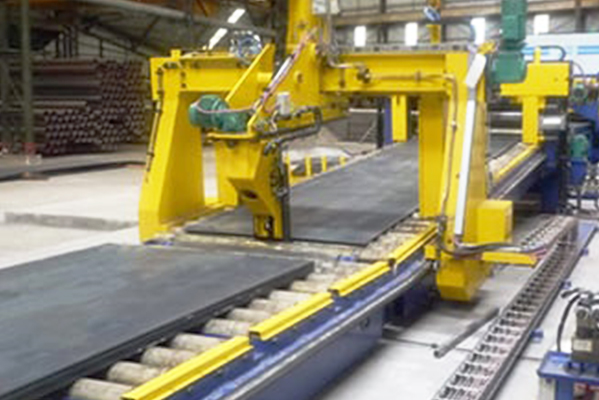Navigation Menu
Contact Us
- Email:
- info@wxavatar.com
- Address:
- Yurong Village, Yuqi Street, Huishan District, Wuxi, China.
Release Date:Mar 24, 2025 Visit:54 Source:Roll Forming Machine Factory
In modern manufacturing and logistics, efficiency and space utilization are critical factors in optimizing production lines. Stacking packaging equipment has emerged as a key solution to enhance productivity, reduce costs, and improve operational efficiency. This article explores the key advantages of stacking packaging equipment and why it is increasingly adopted across industries.
1. Maximized Space Utilization
One of the most significant benefits of stacking packaging equipment is its ability to optimize vertical space. Traditional horizontal packaging systems occupy large floor areas, whereas stacking machines allow products to be arranged in layers, reducing the footprint of production and storage facilities. This is particularly beneficial in warehouses and factories where space is limited.
2. Increased Efficiency and Productivity
Stacking equipment automates the process of arranging products into stable, uniform stacks, significantly reducing manual labor. This automation speeds up packaging lines, minimizes human error, and ensures consistent stacking quality. As a result, businesses can achieve higher throughput and faster order fulfillment.
3. Enhanced Stability and Safety
Properly stacked products are less prone to toppling during transportation and storage. Stacking packaging machines use advanced alignment and compression techniques to create secure, stable loads, reducing the risk of product damage. This improves workplace safety and minimizes losses due to mishandling.
4. Cost Savings
By reducing the need for manual labor and optimizing storage space, stacking packaging equipment helps lower operational costs. Additionally, efficient stacking reduces material waste (such as excess packaging) and transportation costs by allowing more products to be shipped in a single load.

5. Versatility Across Industries
Stacking packaging machines are adaptable to various product types, including boxes, bottles, cans, and bags. Industries such as food and beverage, pharmaceuticals, consumer goods, and logistics widely use these systems to handle different packaging formats efficiently.
6. Integration with Automation and Smart Systems
Modern stacking equipment can be integrated with robotic arms, conveyor systems, and IoT-enabled monitoring tools. This allows for seamless automation, real-time tracking, and predictive maintenance, further enhancing operational efficiency.
7. Sustainability Benefits
Efficient stacking reduces the need for excessive packaging materials, contributing to sustainability goals. Additionally, optimized transportation loads lead to lower fuel consumption and carbon emissions, aligning with eco-friendly business practices.
Conclusion
Stacking packaging equipment offers numerous advantages, from space optimization and cost savings to improved safety and sustainability. As industries continue to prioritize efficiency and automation, investing in advanced stacking solutions will remain a strategic move for businesses looking to enhance their packaging processes.
By leveraging these technologies, companies can achieve greater productivity, reduce waste, and maintain a competitive edge in the market.
Would you like more details on specific types of stacking machines or their applications in certain industries?